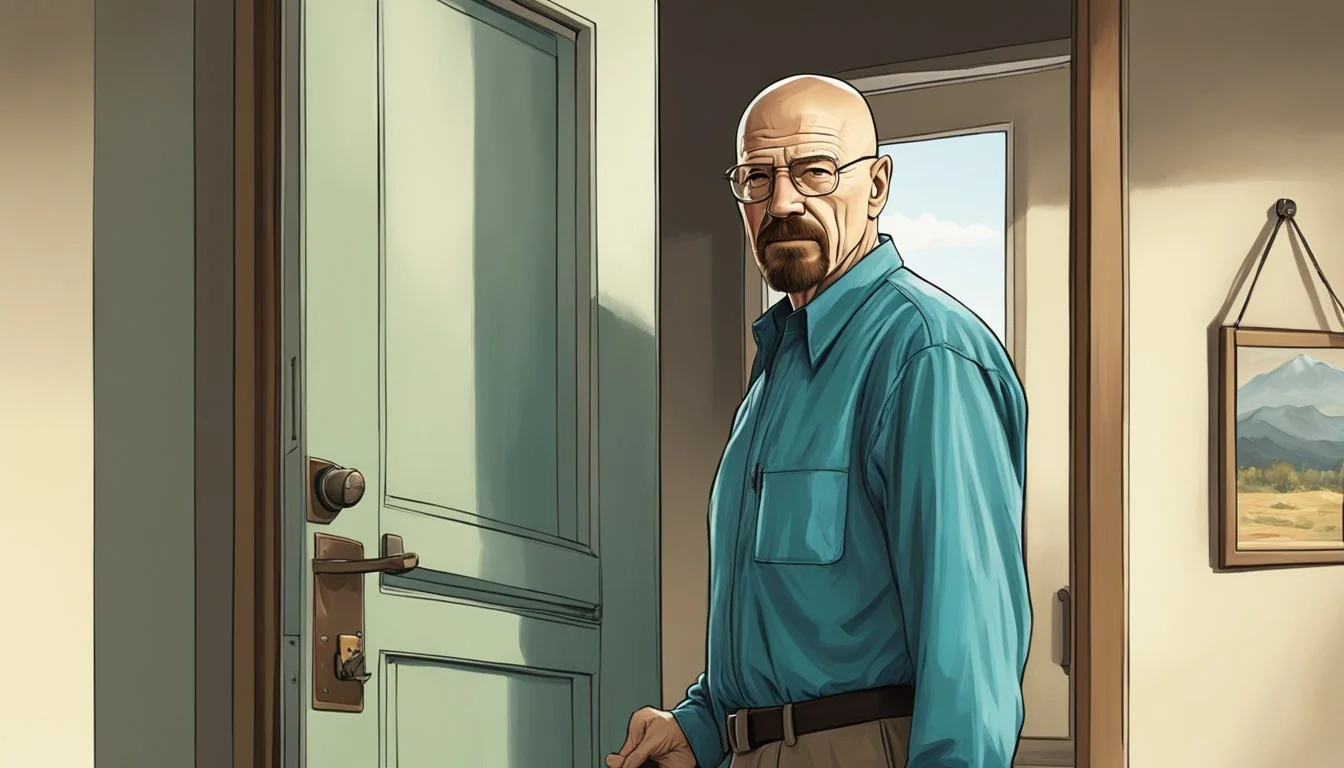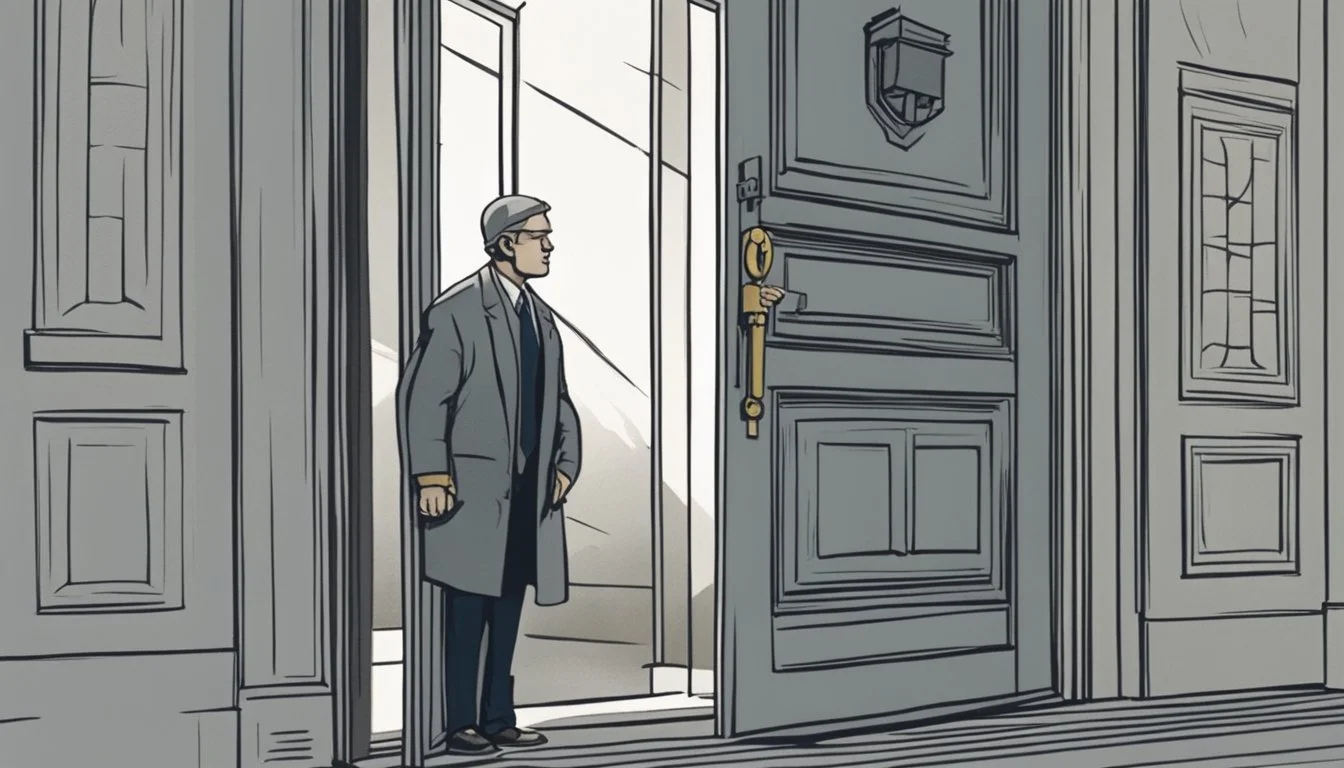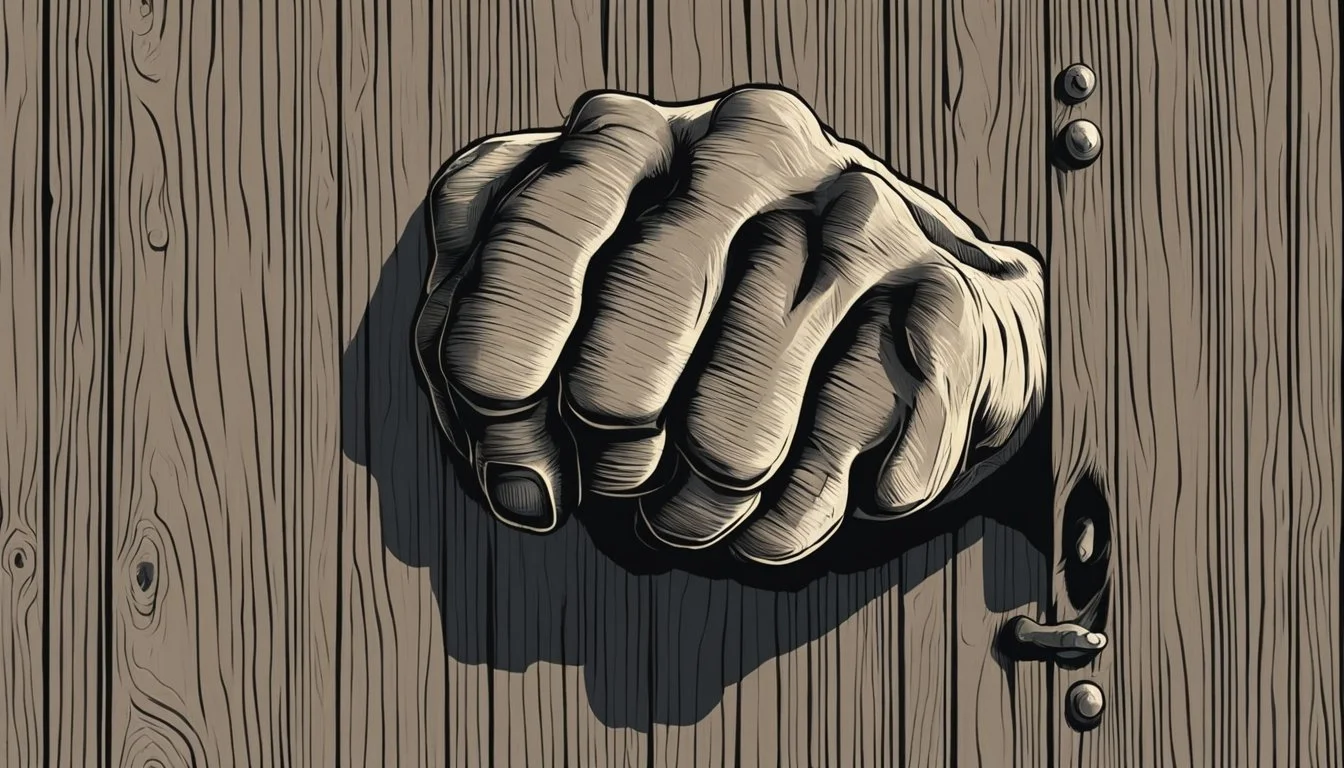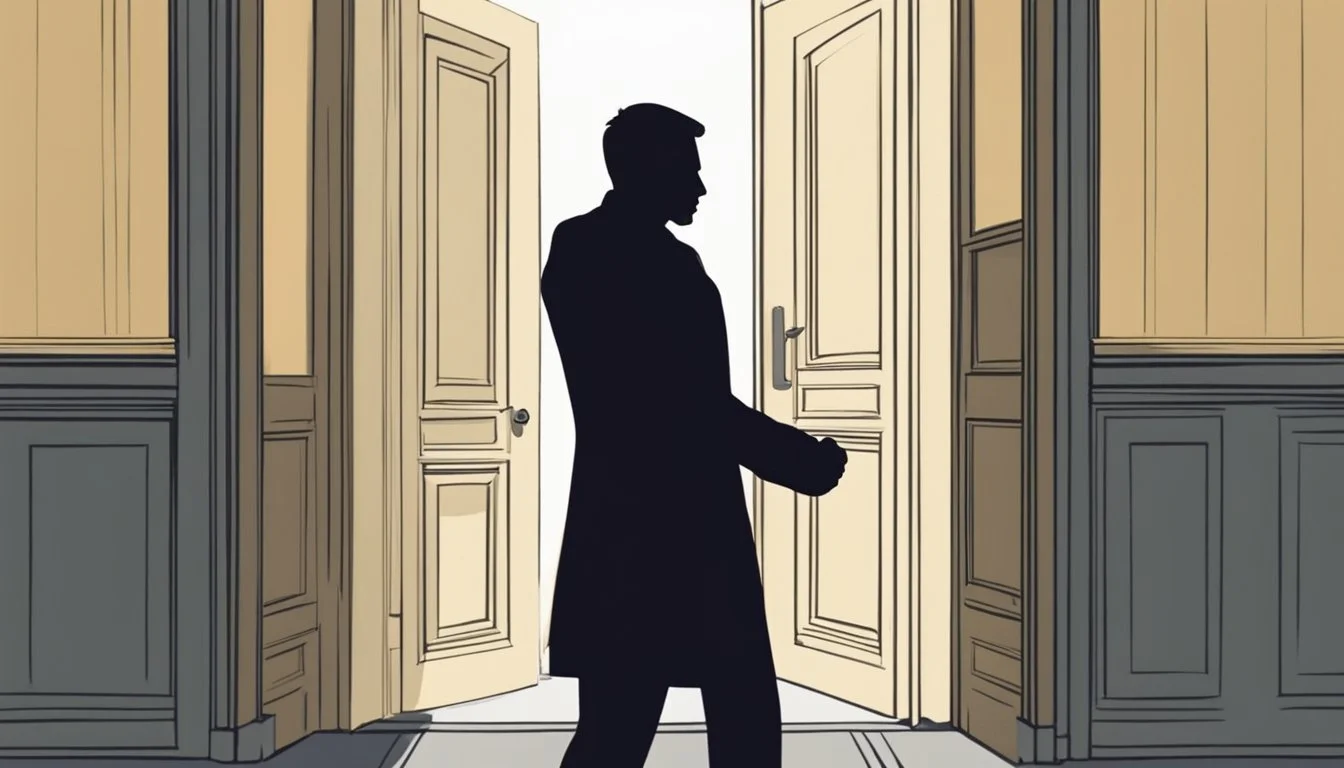The Significance of Walt's Infamous Knock
Authority and Intimidation in Breaking Bad's Power Dynamics
Walter White's infamous "I am the one who knocks" speech in Breaking Bad marks a pivotal moment in his transformation from mild-mannered chemistry teacher to fearsome drug lord. This chilling declaration represents Walt's embrace of his Heisenberg persona and his growing appetite for power and control. Through this single line, Walt asserts his dominance and strikes fear into those around him, showcasing how far he has come from his initial reluctance to use force.
Walt's words carry weight beyond their literal meaning, serving as a metaphor for his newfound authority in the criminal underworld. The knock symbolizes his ability to disrupt lives and instill terror, while also reinforcing his position as the aggressor rather than the victim. This shift in perspective reflects Walt's journey from a man desperately seeking financial security to one who revels in the raw power of his new life.
The impact of Walt's statement reverberates throughout the series, influencing his relationships and decision-making. His willingness to intimidate and manipulate others, including close allies like Jesse, demonstrates the extent of his moral decay. Walt's transformation into Heisenberg becomes complete as he fully embraces the role of the one who knocks, leaving behind any remnants of his former self.
Walter White's Transformation
Walter White undergoes a radical metamorphosis from an unassuming high school chemistry teacher to the feared drug lord known as Heisenberg. His journey is marked by pivotal moments that reshape his identity and moral compass.
From Chemistry Teacher to Heisenberg
Walter White starts as a brilliant but underappreciated chemistry teacher struggling to make ends meet. His expertise in chemistry becomes the foundation for his illicit activities. As he delves into the drug trade, Walt's scientific knowledge gives him an edge, allowing him to produce high-quality methamphetamine.
His alter ego, Heisenberg, emerges as a cunning and ruthless figure in the criminal underworld. This transformation is evident in Walt's appearance, demeanor, and decision-making. He shaves his head, dons a black hat, and adopts a more aggressive persona.
Walt's newfound power and success in the drug business fuel his ambition. He becomes increasingly confident and assertive, shedding his former meek demeanor.
Cancer Diagnosis: The Catalyst of Change
Walt's terminal lung cancer diagnosis serves as the initial catalyst for his transformation. Faced with mortality and financial insecurity, he makes the fateful decision to enter the drug trade. The diagnosis pushes Walt to break free from societal constraints and pursue a life of crime.
Initially, Walt justifies his actions as a means to secure his family's future. However, as time progresses, his motivations shift. The cancer becomes both a ticking clock and a shield, allowing Walt to take risks and make bold moves.
The diagnosis also alters Walt's perspective on life, causing him to reevaluate his priorities and embrace a more selfish outlook.
Breaking Bad: Walter's Alter Ego
Heisenberg represents the darker aspects of Walter White's personality. This alter ego embodies traits that were previously dormant or suppressed:
Ruthlessness
Manipulation
Hunger for power
Willingness to cross moral boundaries
As Heisenberg, Walt displays a duality that becomes increasingly difficult to reconcile. He switches between family man and drug lord, often blurring the lines between these identities.
Walt's transformation is also reflected in his relationships. He becomes more controlling and manipulative, even with his family. His pursuit of power and recognition in the criminal world strains his personal connections.
The evolution of Walter White into Heisenberg showcases the corrupting influence of power and the complexities of human nature.
The Essence of 'I Am the One Who Knocks'
Walter White's iconic declaration encapsulates his transformation from a meek chemistry teacher to a formidable drug lord. This powerful statement reflects his newfound authority, intimidation tactics, and evolving identity in the criminal underworld.
Symbol of Authority and Power
"I am the one who knocks" symbolizes Walt's assertion of dominance and control. It represents his belief that he has become the aggressor, not the victim. This phrase showcases his pride in his newfound position of power within the drug trade.
Walt's words convey a sense of authority that extends beyond mere financial gain. He sees himself as a force to be reckoned with, capable of instilling fear in others. This declaration marks a turning point in his character development, highlighting his growing confidence and influence.
The statement also serves as a warning to those who might underestimate him. Walt is no longer the one hiding from danger; he has become the danger itself.
Evolving Identity and Intimidation
Walt's infamous line reflects his dramatic shift in self-perception. He has embraced his alter ego, Heisenberg, fully embodying the role of a dangerous criminal mastermind. This transformation is evident in his choice of words and the forceful way he delivers them.
The phrase demonstrates Walt's ability to intimidate through words alone. He doesn't need physical violence to assert his dominance; his reputation and presence are enough. This psychological power play becomes a key tool in his arsenal.
Walt's declaration also reveals his growing arrogance. He believes he has risen above the common criminals and now stands at the top of the drug empire. This inflated sense of self-importance drives many of his subsequent actions and decisions.
Character Development and Moral Decay
Walter White's transformation from a meek chemistry teacher to the infamous Heisenberg exemplifies a dramatic shift in character and ethics. His journey explores the complexities of human nature and the corrosive effects of power.
Walter White vs. Heisenberg: The Duality
Walter White's alter ego, Heisenberg, emerges as a response to his feelings of powerlessness. This duality represents the internal struggle between his former law-abiding self and his newfound criminal persona.
As Heisenberg, Walter adopts a confident and ruthless demeanor. He wears the iconic black hat and sunglasses, symbolizing his embrace of a darker identity.
The contrast between Walter and Heisenberg becomes more pronounced as the series progresses. Walter's moral compass erodes, while Heisenberg's influence grows stronger.
This split personality allows Walter to compartmentalize his actions, justifying increasingly unethical choices under the guise of necessity.
Crossing Moral Boundaries
Walter's descent into criminality is marked by a series of ethical compromises. Initially, he rationalizes his actions as means to provide for his family after his cancer diagnosis.
His first boundary crossing involves producing methamphetamine. This decision sets him on a path of escalating moral transgressions.
As challenges arise, Walter becomes more willing to resort to violence and manipulation. He poisons a child, allows Jane to die, and orders the deaths of potential threats.
Each transgression chips away at his former ethical standards. Walter's ability to justify his actions showcases the gradual nature of moral decay.
His choices highlight the slippery slope of compromising one's principles, demonstrating how small ethical breaches can lead to major moral failings.
Pride and Arrogance
Walter's transformation is fueled by his growing pride and arrogance. His success in the drug trade inflates his ego, leading to a sense of invincibility.
He begins to take unnecessary risks, driven by a desire for recognition and respect. This pride manifests in his insistence on the purity of his product and his refusal to walk away from the business.
Walter's arrogance blinds him to the consequences of his actions. He underestimates his opponents and overestimates his own abilities.
His famous declaration, "I am the one who knocks," encapsulates his inflated sense of power and authority. This pride becomes his Achilles' heel, leading to conflicts with both allies and enemies.
As his empire grows, so does his ego, pushing him further from his original motivations and deeper into a world of moral ambiguity.
The Impact on Family Dynamics
Walt's transformation into Heisenberg profoundly altered his relationships with his wife and children. His actions created a rift between him and Skyler, while his dual identities as family man and criminal mastermind led to increasing isolation.
Walter White: Family Man or Ruthless Drug Kingpin?
Walt initially entered the drug trade to provide for his family after his cancer diagnosis. He sought to secure their financial future, driven by a desire to leave a legacy. As his empire grew, Walt's priorities shifted. He became consumed by power and pride, often neglecting his family's emotional needs.
Bryan Cranston's nuanced portrayal captured Walt's internal struggle between his roles as caring father and ruthless criminal. At home, he maintained a façade of normalcy, attending family dinners and school functions. In the drug world, he adopted the intimidating Heisenberg persona.
This duality took its toll. Walt's absences and secretive behavior strained his relationship with Walt Jr. His attempts to bond with his son became increasingly desperate and hollow as his criminal activities escalated.
Skyler White and the Disintegration of Family
Skyler's journey from supportive wife to reluctant accomplice exemplified the family's unraveling. Initially kept in the dark, she grew suspicious of Walt's strange behavior and unexplained absences. As the truth emerged, their marriage crumbled under the weight of lies and criminal complicity.
Skyler's attempts to protect the family led her to complex moral compromises. She laundered money through a car wash and struggled to maintain a semblance of normalcy for their children. The strain manifested in tense family dinners and forced celebrations.
Walt's infamous knock, once a symbol of his return home, became a source of dread for Skyler. It signaled the intrusion of Heisenberg into their domestic life, blurring the lines between Walt the family man and Walt the drug kingpin.
Criminal Enterprise and Meth Production
Walt's transformation from high school chemistry teacher to drug lord hinges on his expertise in methamphetamine production. His scientific approach revolutionizes the drug trade and propels him to power.
The Birth of Blue Methamphetamine
Walt applies his chemistry knowledge to create a unique, high-purity methamphetamine with a distinctive blue color. This product quickly gains notoriety in the criminal world for its superior quality. Walt's meticulous attention to detail and insistence on pharmaceutical-grade equipment set his operation apart from typical meth labs.
The purity of Walt's methamphetamine reaches an unprecedented 99.1%, far surpassing competitors. This exceptional product becomes his trademark and fuels the rapid growth of his criminal enterprise. Walt's scientific precision transforms meth production from a crude process to a refined art.
Power Struggles and Drug Trade Dominance
Walt's rise in the drug trade is marked by intense power struggles. His alias "Heisenberg" becomes feared and respected in criminal circles. Walt eliminates rivals through cunning strategies and occasionally brutal force.
His expanding operation faces challenges from established cartels and local dealers. Walt outmaneuvers competitors by leveraging his superior product and forming strategic alliances. He manipulates the volatile criminal landscape to consolidate his power.
Walt's growing influence attracts both lucrative opportunities and dangerous enemies. His tactical brilliance in navigating the drug trade cements his status as a formidable drug lord. The criminal world learns to fear the knock of Heisenberg.
Relationships and Influence
Walt's quest for power and control extended beyond his infamous knock, permeating his relationships with key figures in the criminal underworld. His interactions with Jesse, Gus, Saul, and various adversaries showcased his growing influence and manipulation tactics.
Jesse Pinkman: Student and Partner
Walt's relationship with Jesse evolved from teacher-student to an uneasy partnership. Initially, Walt leveraged his chemistry expertise to gain Jesse's respect and cooperation. As their operation grew, Walt's manipulation of Jesse intensified. He exploited Jesse's vulnerabilities, using emotional tactics and calculated decisions to maintain control.
Walt's influence over Jesse became increasingly toxic. He pushed Jesse into dangerous situations, like confronting rival dealers or poisoning Gus Fring. This dynamic highlighted Walt's willingness to sacrifice others for his own gain.
Their partnership, marked by moments of genuine connection and brutal betrayal, became a microcosm of Walt's broader descent into villainy.
Alliances with Gus Fring and Saul Goodman
Walt's alliances with Gus Fring and Saul Goodman demonstrated his ability to navigate complex power structures. With Gus, Walt initially played the role of a valuable asset, leveraging his superior product to gain favor.
As tensions rose, Walt employed cunning strategies to outmaneuver Gus. He manipulated Jesse, exploited Gus's vulnerabilities, and ultimately orchestrated his rival's downfall through a combination of deception and violence.
Saul Goodman served as Walt's legal shield and criminal facilitator. Walt's growing influence allowed him to push Saul beyond his comfort zone, turning the lawyer into an unwilling accomplice in increasingly dangerous schemes.
Conflicts with Drug Cartels and Rivals
Walt's encounters with drug cartels and rival operators showcased his ruthless approach to eliminating threats. He employed a mix of strategic planning, scientific knowledge, and brutal violence to assert dominance.
Notable conflicts included:
Tuco Salamanca: Walt used chemistry to create an explosion, establishing his dangerous reputation.
The cousins: Walt manipulated circumstances to redirect their vengeance towards Hank.
Lydia Rodarte-Quayle: Walt poisoned her with ricin, demonstrating his willingness to eliminate loose ends.
These confrontations solidified Walt's position as a formidable player in the drug trade. His ability to outmaneuver established criminal organizations further fueled his ego and sense of invincibility.
Symbolism and Cultural References
Breaking Bad's intricate storytelling incorporates numerous symbolic elements and cultural references. These enrich the narrative and provide deeper layers of meaning to Walt's character development and actions.
Walt Whitman and 'Leaves of Grass'
Walt Whitman's poetry collection "Leaves of Grass" plays a pivotal role in Breaking Bad's symbolism. The book serves as a link between Walter White and his former lab assistant, Gale Boetticher. Both men share a reverence for Whitman's work, highlighting their intellectual connection.
"Leaves of Grass" becomes a crucial plot device when Hank discovers the inscribed copy in Walt's bathroom. This moment marks a turning point in the series, as Hank finally realizes Walt's true identity as Heisenberg.
The shared initials of Walter White and Walt Whitman create a metaphorical bridge between the characters. This connection emphasizes Walt's transformation from a mild-mannered teacher to a powerful figure in the drug world.
The Antihero Archetype in Drama
Walter White embodies the antihero archetype, a complex character type prevalent in modern drama. His journey from a sympathetic protagonist to a morally ambiguous figure mirrors classic antiheroes in literature and television.
Walt's descent into criminality challenges viewers' perceptions of right and wrong. His actions become increasingly questionable as the series progresses, yet audiences often find themselves conflicted in their support for him.
The antihero trope allows Breaking Bad to explore themes of moral relativism and the corrupting influence of power. Walt's character arc serves as a cautionary tale about the consequences of unchecked ambition and ego.
Intertextuality with Historical Figures
Breaking Bad draws parallels between Walt and historical figures, adding depth to his character. The most notable comparison is with Werner Heisenberg, the German physicist after whom Walt's alter ego is named.
This allusion to Heisenberg connects Walt's scientific background with his criminal activities. It also hints at the uncertainty principle, reflecting the unpredictable nature of Walt's actions and their consequences.
The series also makes subtle references to other historical figures, such as Abraham Lincoln. These comparisons often highlight the contrast between Walt's initial noble intentions and his eventual moral decay.
Walt's Threats: Demonstrating Danger and Control
Walt's intimidation tactics and threats were central to his rise as a ruthless drug kingpin. His words and actions conveyed a clear message of danger and established his dominance in the criminal underworld.
Iconic Moments of Intimidation
Walt's infamous "I am the danger" speech stands out as a defining moment. He declared to his wife, "I am not in danger, Skyler. I am the danger." This chilling statement encapsulated his transformation from a mild-mannered teacher to a feared criminal mastermind.
Walt's calculated use of explosives to destroy Tuco's office was another pivotal display of power. This act sent shockwaves through the drug trade, establishing Walt as a force to be reckoned with.
His cold-blooded poisoning of Brock, an innocent child, demonstrated the lengths Walt would go to manipulate others and maintain control. This act shocked even his closest associates, cementing his reputation for ruthlessness.
Building a Reputation through Fear
Walt leveraged his terminal cancer diagnosis to project an aura of fearlessness. His willingness to take extreme risks made him unpredictable and dangerous in the eyes of both allies and enemies.
He cultivated a menacing alter ego, "Heisenberg," complete with a distinctive look: shaved head, dark sunglasses, and black hat. This persona became synonymous with danger in the drug world.
Walt's reputation grew through strategic displays of violence. The coordinated prison assassinations he orchestrated eliminated potential threats and showcased his far-reaching influence.
His ability to outmaneuver powerful cartels and rival drug lords further solidified his status. Walt's intellect and willingness to embrace brutality made him a uniquely formidable figure in the criminal landscape.
Legacy of Walter White's Character
Walter White's transformation into Heisenberg left an indelible mark on television history and popular culture. His complex character continues to fascinate audiences and influence storytelling.
Influence on Television and Pop Culture
Walter White revolutionized the antihero archetype in television. His journey from a mild-mannered chemistry teacher to a ruthless drug kingpin captivated viewers and critics alike.
The character's iconic look - bald head, goatee, and pork pie hat - became instantly recognizable. "I am the one who knocks" entered the lexicon of memorable TV quotes.
Breaking Bad's success paved the way for more morally ambiguous protagonists in television dramas. The show's exploration of power, morality, and consequences raised the bar for storytelling complexity.
Walter White's legacy extends beyond television. The character inspired merchandise, Halloween costumes, and even real-world copycats attempting to emulate his fictional meth empire.
Revisiting Heisenberg in 'Better Call Saul'
Better Call Saul, the Breaking Bad prequel, offered glimpses of Walter White before his transformation. These appearances provided new context for the character's eventual descent into criminality.
The show explored the impact of Heisenberg's actions on other characters, particularly Saul Goodman. This retrospective view added depth to Walter White's legacy within the Breaking Bad universe.
Better Call Saul's finale brought the story full circle, reinforcing Walter White's pivotal role in shaping the fates of those around him. His influence loomed large even in scenes where he didn't appear.









